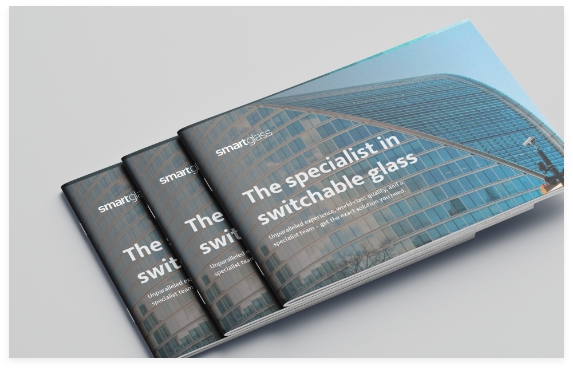Download Smartglass Brochure
spaces that adapt to users’ needs at the flick of a switch.
University of Cambridge, Department of Engineering.
Prepared by: M. Beevor
![]() View entire Paper outlining testing into the Energy Saving Potential of SPD Glass:
View entire Paper outlining testing into the Energy Saving Potential of SPD Glass:
Cambridge University SPD SmartGlass Report.pdf
This project looks into the development and performance of new smart technology that helps to reduce excessive energy loads used in buildings. Building physics and the improvement of energy efficiency associated with it is a very important area of engineering research and development in the world today, with 40% of the world’s carbon being consumed in maintaining a comfortable interior environment. One of the most susceptible building facades for high amounts of energy loss is glass, and with modern architectural movements in using glass to create ‘honest’ buildings accentuated by light and space, the use of glass facades is ever increasing.
Driven for the need for better insulated zero-carbon buildings, a new generation of actively controlled components, are starting to replace conventional materials. These smart devices are able to respond to seasonal variations in temperature and solar radiation. Such advancements in ‘smart’ windows will stimulate the continued use of glass as a building facade and also reduce the energy loads associated with achieving a comfortable internal environment. The foundation of this project is to address the performance of new switchable chromogenic glass, and more specifically ‘SPD SmartGlass’. SPD glass uses suspended particle device technology which gives an electronic control of light and heat transmission by altering the ‘tint’ of the window. When switched on the glass turns clear and allows for around 45% visible light transmission, and when no current is applied the glass holds a blue tint and allows less than 1% visible light transmission. In all states of transparency the glass rejects over 99% of UV light transmission.
SPD glass transmission properties can also control the heat flow into a room by rejecting solar heat gain. This investigation is primarily focused on the associated reduction in energy cooling required to maintain a user comfortable room environment. Experimental design was divided into three main components;
Laboratory testing took place using a small sample of SPD glass and was carried out in order to gain a better understanding of the glass’s transmission properties at varying voltage level. Potentiometers were attached to the SPD circuit in order to control the variation of voltage, and the change in light intensity received through the glass was measured.
Real – world testing of the windows was carried out in an office within the department. SPD windows were installed over the existing single glazing and the room environment was measured over a month. At the same time measurements were also taken in the identical adjacent office with regular single glazing, which acted as a reference to the performance of the SPD windows. Conditions measured were room temperature, solar heat temperature, and user comfort. This aspect of the investigation was designed to give accurate knowledge into the real-world performance of the SPD glazing, and whether it would be a suitable technology to be used in everyday situations.
Environmental modelling was carried out by IESVE software, which is used to evaluate the energy and overall performance of a building. Two models were made of the test office and surrounding building, with one using SPD glazing, and the other regular single float glazing. It was desirable for the models to be an accurate representation to the test office in order to compare virtual results and real-world data. The IESVE software is able to quantify numerous values of the room’s performance and conditions, and for this investigation, the air temperature, solar heat gain, and cooling loads were compared between the two different glass facades. Simulations were primarily carried out for the Cambridge location, though extra simulations were carried out in other hotter world locations to evaluate any difference in SPD performance.
Results from the laboratory experiment showed that the relationship between voltage applied to the glass and optical light transmission is not directly proportional. User feedback from the windows also suggested that the operation of the windows should come with a variable setting to increase light control and exact ‘tint’ of the glass. The variable change in light transmission as a function of voltage would need to be accounted for in producing an operational dial for the user.
Results from the real-world testing of the windows showed that the SPD glass was able to provide a much more uniform and comfortable internal room temperature than regular single float glazing, with fluctuations of only 2°C compared with 8°C. Temperatures recorded as a result of direct sunlight showed a difference of up to 15°C in the two offices, with temperature exceeding 40°C through the single glazing, and not rising above 30°C for the SPD office.
View entire Paper outlining testing into the Energy Saving Potential of SPD Glass:
Cambridge University SPD SmartGlass Report.pdf

Wherever you are in the world one of our team will be in touch to advise on the best smart glass solution for your needs.